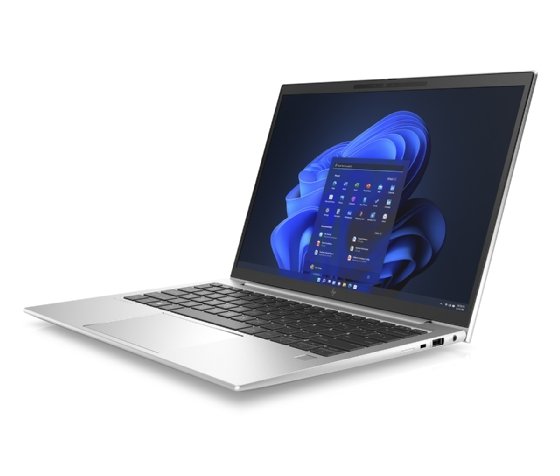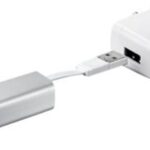In today’s tech-driven world, a laptop computer is a must-have. It offers convenience and portability.
Whether you’re a student, professional, or casual user, a laptop computer can meet your needs. They come in various sizes, with different features and price points. From basic models for web browsing to high-performance machines for gaming or design, there’s something for everyone.
This blog will explore the essentials of laptop computers. We’ll discuss their benefits, different types, and what to consider when buying one. By the end, you’ll know how to choose the right laptop for you. Let’s dive in and discover what makes laptops so indispensable in our daily lives.
Choosing The Right Processor
Choosing the right processor is crucial when buying a laptop. The processor, also known as the CPU, impacts the performance of your laptop. It determines how quickly tasks are completed and how well the laptop can handle multiple tasks at once. Let’s dive into the key aspects of choosing the right processor.
Intel Vs Amd
When selecting a laptop processor, you often face a choice between Intel and AMD. Both companies offer a range of processors suitable for different needs.
Intel processors are known for their high performance and efficiency. They are often found in many high-end laptops.
AMD processors, on the other hand, are celebrated for their value for money. They often provide comparable performance at a lower price point.
Here’s a quick comparison:
| Feature | Intel | AMD |
|---|---|---|
| Performance | High | Competitive |
| Price | Higher | Lower |
| Efficiency | Excellent | Good |
Core Count And Clock Speed
Two important specifications to consider are core count and clock speed.
Core count refers to the number of independent units within the processor that can execute tasks. More cores mean better multitasking.
- Dual-core: Suitable for basic tasks like web browsing.
- Quad-core: Good for most users, handling multitasking well.
- Hexa-core and above: Ideal for heavy tasks like video editing and gaming.
Clock speed is measured in GHz and indicates how quickly a processor can execute instructions. Higher clock speeds mean faster performance.
Consider your needs and choose a processor with the right balance of cores and clock speed.
Understanding Ram Requirements
Choosing the right amount of RAM for your laptop is crucial. RAM (Random Access Memory) affects the speed and performance of your laptop. Too little RAM can slow down your system. Too much can be a waste of money. Understand what you need for your specific use.
Minimum Ram For Basic Use
For basic tasks, you don’t need much RAM. Tasks like browsing the web, checking emails, or using office applications are not demanding. 4GB of RAM is usually enough. This amount will allow you to:
- Open multiple tabs in a web browser
- Run word processors like Microsoft Word
- Stream standard-definition videos
Having 4GB of RAM ensures smooth performance for simple activities. 8GB of RAM is better for multitasking. You can run more applications simultaneously. You can also open more browser tabs without slowing down your laptop.
Optimal Ram For Gaming And Professional Use
Gaming and professional tasks are more demanding. These activities require more RAM. 16GB of RAM is recommended for gaming and professional work. This includes:
- Video editing
- Graphic design
- 3D modeling
- Programming
Professional software and high-end games require more memory. 32GB of RAM is ideal for heavy users. This amount is suitable for:
- Running virtual machines
- Handling large datasets
- Performing advanced video editing
Below is a table summarizing the RAM requirements:
| Usage | Recommended RAM |
|---|---|
| Basic Use | 4GB – 8GB |
| Gaming | 16GB |
| Professional Use | 16GB – 32GB |
Choosing the right amount of RAM enhances your laptop’s performance. It ensures efficiency in your daily tasks. Make an informed decision based on your needs.
Storage Solutions
Choosing the right storage solution for your laptop can significantly impact its performance. Storage determines how much data you can store and how quickly your laptop can access it. Let’s explore the different storage options and their benefits.
Ssd Vs Hdd
Solid State Drives (SSD) and Hard Disk Drives (HDD) are the two main types of storage. Each has its pros and cons.
| Feature | SSD | HDD |
|---|---|---|
| Speed | Faster | Slower |
| Durability | More Durable | Less Durable |
| Price | More Expensive | Cheaper |
| Storage Capacity | Typically Lower | Typically Higher |
SSDs are known for their speed and reliability. They have no moving parts, making them more durable. HDDs, on the other hand, offer more storage space at a lower cost. They are suitable for users who need a lot of storage without breaking the bank.
Recommended Storage Capacity
Choosing the right storage capacity depends on your usage needs. Here are some recommendations:
- 256GB SSD: Ideal for basic users who store documents and photos.
- 512GB SSD: Suitable for users who store videos and games.
- 1TB HDD: Best for users who need ample storage for large files.
- 2TB HDD or larger: Great for professionals with extensive data needs.
For most users, a combination of SSD and HDD can offer the best of both worlds. Use an SSD for your operating system and applications. Store larger files on an HDD.
Graphics Capabilities
The graphics capabilities of a laptop computer are crucial for many users. Whether you are a gamer, a designer, or just someone who watches videos, the GPU (Graphics Processing Unit) plays a significant role in your experience. Understanding the difference between integrated and dedicated graphics and knowing the best GPUs for gaming and design can help you make an informed decision.
Integrated Vs Dedicated Graphics
Integrated graphics are built into the CPU. They share memory with the CPU and are suitable for basic tasks. Web browsing, document editing, and streaming videos work fine with integrated graphics.
Dedicated graphics, on the other hand, have their own memory. They are separate from the CPU and are essential for more demanding tasks. Gaming, 3D modeling, and video editing require dedicated graphics for smooth performance.
Below is a comparison table showing the main differences:
| Feature | Integrated Graphics | Dedicated Graphics |
|---|---|---|
| Memory | Shares with CPU | Own dedicated memory |
| Performance | Basic tasks | High-end tasks |
| Power Consumption | Low | High |
| Cost | Lower | Higher |
Best Gpus For Gaming And Design
For gaming and design, the GPU must be powerful. Below is a list of some of the best GPUs for these tasks:
- NVIDIA GeForce RTX 3080: Great for high-end gaming and 3D rendering.
- AMD Radeon RX 6800 XT: Excellent for gaming and professional design work.
- NVIDIA Quadro RTX 4000: Ideal for professional 3D modeling and video editing.
- AMD Radeon Pro 5500M: Suitable for design professionals who need high performance.
These GPUs offer exceptional performance and are preferred by gamers and designers worldwide. Choose the one that best fits your needs and budget.
Display Quality
The display quality of a laptop computer significantly impacts your overall experience. Whether you’re working, gaming, or watching movies, a good display can make all the difference. In this section, we’ll discuss the key aspects of display quality, including resolution, refresh rate, screen size, and panel types.
Resolution And Refresh Rate
Resolution determines the clarity of the images on your screen. Higher resolutions mean more pixels, resulting in sharper and clearer images. Common resolutions include:
- HD (1366×768): Suitable for basic tasks and budget laptops.
- Full HD (1920×1080): Ideal for most users, offering a good balance of clarity and performance.
- QHD (2560×1440): Great for professionals and gamers who need higher detail.
- 4K (3840×2160): Best for high-end tasks and multimedia creation, providing stunning detail.
Refresh rate is the number of times the display updates per second, measured in Hertz (Hz). Common refresh rates are:
| Refresh Rate | Use Case |
|---|---|
| 60Hz | Standard, suitable for most tasks. |
| 120Hz | Better for smoother animations and gaming. |
| 144Hz | Ideal for competitive gaming, reducing motion blur. |
| 240Hz | Extreme gaming performance, the smoothest experience. |
Screen Size And Panel Types
Screen size affects portability and viewing comfort. Common screen sizes include:
- 13 inches: Highly portable, great for travel.
- 15 inches: Balanced size, suitable for most users.
- 17 inches: Larger screen, better for productivity and gaming.
Panel types influence color accuracy, viewing angles, and response times. The main types are:
- TN (Twisted Nematic): Fast response times, but limited viewing angles and color reproduction.
- IPS (In-Plane Switching): Excellent color accuracy and wide viewing angles, slightly slower response times.
- OLED (Organic Light-Emitting Diode): Best color accuracy and contrast, more expensive.

Credit: www.amazon.com
Battery Life Considerations
Battery life is a critical consideration for anyone using a laptop computer. The ability to work, study, or entertain without constantly searching for an outlet can greatly enhance your experience. Understanding the factors that influence battery life and how to extend it can make a significant difference.
Usage Scenarios And Battery Needs
Different tasks require different amounts of power. Knowing how you use your laptop can help manage battery expectations.
| Usage Scenario | Battery Needs |
|---|---|
| Web Browsing | Low to Moderate |
| Video Streaming | Moderate |
| Gaming | High |
| Video Editing | Very High |
Simple tasks like web browsing or word processing use less battery. Intensive tasks like gaming or video editing drain the battery faster. Understanding this helps in planning your work or play sessions.
Tips To Extend Battery Life
Here are some practical tips to maximize your laptop’s battery life:
- Adjust screen brightness to a lower level.
- Close unnecessary applications and tabs.
- Disable Bluetooth and Wi-Fi when not in use.
- Use power-saving mode available in your OS.
- Unplug peripherals like external hard drives when not needed.
Following these tips can help you get more hours out of your laptop. Keeping your battery healthy and extending its life is easier than you might think.
Portability And Build Quality
When choosing a laptop, portability and build quality are crucial factors. A laptop must be easy to carry and withstand daily use. In this section, we will explore these aspects in detail.
Weight And Dimensions
The weight and dimensions of a laptop determine its portability. A lightweight laptop is easier to carry, especially for students and professionals. Laptops typically range from 2 to 5 pounds.
The dimensions, including thickness, width, and height, also affect portability. Slim laptops are easier to fit into bags and backpacks. Check the size specifications before purchasing.
| Weight Category | Weight Range |
|---|---|
| Ultra-light | Less than 2 pounds |
| Light | 2 to 3 pounds |
| Medium | 3 to 4 pounds |
| Heavy | More than 4 pounds |
Durability And Materials
Durability is essential for a laptop, as it is used daily. The materials used in the construction play a significant role. Laptops with metal bodies are more durable than those with plastic bodies.
Common materials include aluminum, magnesium alloy, and carbon fiber. These materials not only enhance durability but also provide a premium look and feel.
- Aluminum: Lightweight and strong
- Magnesium Alloy: Lightweight and more durable
- Carbon Fiber: Extremely strong and light
Consider the build quality, especially if you travel frequently. A durable laptop can withstand bumps and minor drops.

Credit: www.techtarget.com
Operating System Choices
Choosing the right operating system for your laptop can make a significant difference. Each operating system offers unique features and benefits. This section will explore the three main options: Windows, macOS, and Linux.
Windows Vs Macos Vs Linux
Each of these operating systems has its strengths and weaknesses:
| Operating System | Strengths | Weaknesses |
|---|---|---|
| Windows |
|
|
| macOS |
|
|
| Linux |
|
|
Compatibility And Ecosystem
Compatibility and ecosystem are crucial factors when choosing an operating system:
- Windows: Compatible with most software and hardware. Works well with a variety of peripherals.
- macOS: Best within the Apple ecosystem. Perfect for users with other Apple devices.
- Linux: Best for users who need flexibility. Ideal for developers and tech enthusiasts.
Consider the software and devices you use daily. Ensure your chosen operating system supports them. This can greatly affect your productivity and user experience.
Connectivity Options
Connectivity options are crucial for laptop computers. They ensure seamless communication with peripherals, networks, and other devices. This section explores the key connectivity features that modern laptops offer.
Ports And Slots
Laptops come with various ports and slots to connect external devices. These include:
- USB Ports: Commonly used for connecting peripherals like mice, keyboards, and external drives.
- HDMI Ports: Essential for connecting to external monitors and projectors.
- SD Card Slots: Useful for transferring data from cameras and other devices.
- Ethernet Ports: For wired internet connections, providing stable and high-speed connectivity.
- Audio Jacks: For headphones, microphones, and external speakers.
Modern laptops often feature USB-C ports. They support faster data transfer and charging capabilities. Some high-end models include Thunderbolt 3 or Thunderbolt 4 ports, providing even faster data transfer rates and versatile connectivity options.
Wireless Connectivity
Wireless connectivity is vital for laptop users. It allows for a clutter-free and mobile experience. Key wireless connectivity options include:
- Wi-Fi: Most laptops support dual-band Wi-Fi (2.4 GHz and 5 GHz). This ensures a reliable and fast internet connection.
- Bluetooth: Enables connection with wireless peripherals such as mice, keyboards, and headphones. Modern laptops typically support Bluetooth 5.0 or higher.
- Cellular Connectivity: Some laptops offer built-in LTE or 5G support. This allows for internet access even without Wi-Fi.
To summarize, a laptop’s connectivity options significantly enhance its functionality. Whether through physical ports or wireless technologies, these features enable users to stay connected and productive.

Credit: www.pcmag.com
Budgeting And Value
When buying a laptop, budgeting is crucial. You want value for your money. Let’s explore how to set a budget and find the best deals.
Setting A Budget
Setting a budget helps you control spending. Here are some steps:
- Assess Your Needs: Determine what you need the laptop for. Work, gaming, or simple browsing?
- Research Prices: Look at different brands and models. Compare prices.
- Set a Limit: Decide on a maximum amount you are willing to spend.
Budgeting ensures you don’t overspend. It also helps narrow down choices.
Finding The Best Deals
Finding the best deals can save you a lot of money. Consider these tips:
- Check Online Stores: Websites often have discounts. Look for deals on Amazon, eBay, and other online retailers.
- Visit Physical Stores: Sometimes, physical stores offer special promotions. Check local electronics stores.
- Use Price Comparison Tools: Websites like PriceGrabber compare prices across various sellers.
Below is a table showing some popular websites to find deals:
| Website | Features |
|---|---|
| Amazon | Wide range of products, customer reviews, frequent discounts |
| eBay | Auction options, refurbished items, competitive pricing |
| Best Buy | In-store pickup, warranty options, member deals |
Timing is also crucial. Look out for sales events like Black Friday or Cyber Monday. These events often have significant discounts.
Frequently Asked Questions
What Is The Best Laptop For Students?
The best laptop for students balances performance, price, and portability. Look for models with decent battery life, lightweight design, and sufficient processing power to handle academic tasks.
How Much Ram Is Needed For A Laptop?
For most users, 8GB of RAM is sufficient. It allows smooth multitasking and efficient performance for everyday tasks like browsing and document editing.
Can Gaming Laptops Be Used For Work?
Yes, gaming laptops can be used for work. They have powerful processors and graphics, making them suitable for demanding applications and multitasking.
How Long Should A Laptop Battery Last?
A good laptop battery should last between 6 to 10 hours on a single charge. Battery life depends on usage and power settings.
Conclusion
Choosing the right laptop computer is essential. Consider your needs and budget. Look for features that match your daily tasks. Battery life, screen size, and performance matter. Don’t rush your decision. Research and read reviews. A good laptop can enhance productivity and entertainment.
Stay updated with new models and technology. Make an informed choice for your best experience. Happy laptop hunting!







